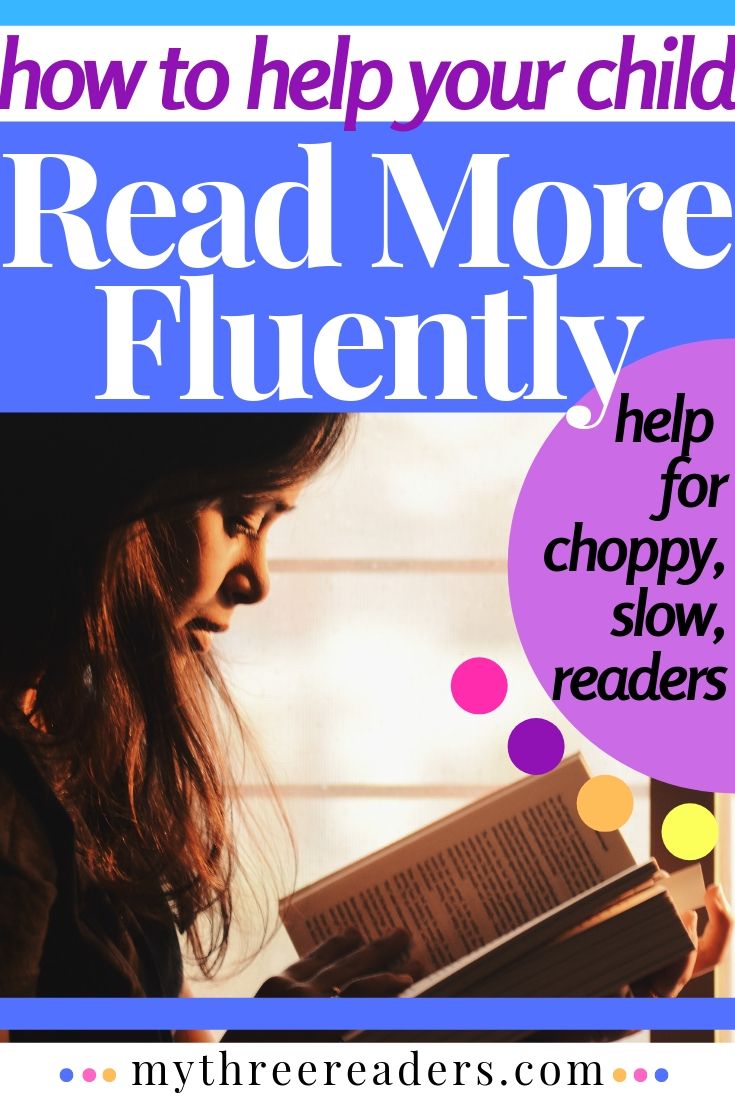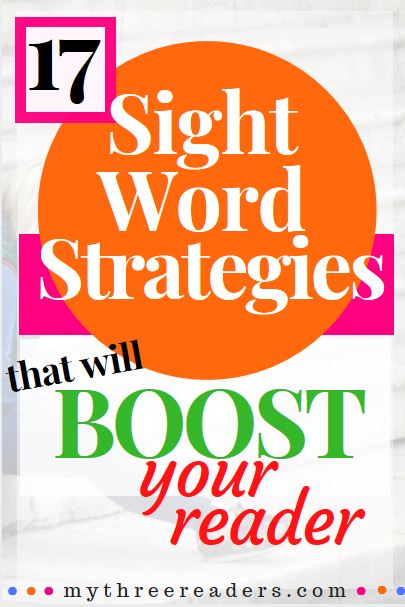15 Quick Reading Fluency Activities, Tips & Strategies to Improve Reading Fluency in Young Readers.
Does your child sound choppy, slow, and labored when she is attempting to read? Then you are in the right place to find a bit of help with these reading fluency activites with reading fluency games online, reading fluency passages, timed reading games, printable reading fluency games and more!
This article explains more about how to teach reading fluency, in particular. (For more general strategies on teaching reading, check out this page on how to teach reading.)
Know what good reading fluency looks like before you start.
Before we even begin, let's talk about what reading fluency is exactly. Fluency is typically defined by the ability to read accurately, quickly, and with proper expression.
Reading fluency is an indicator that you understand and can convey to listeners what the book or passage you are reading is about. Hand-in-hand with automaticity (the ability to automatically recall written words quickly), reading fluency combines automaticity with expression when speaking, which indicates that you understand, and are "into" the book.
So to recap, if you are a fluent reader, you can read:
Quickly - A child by the end of 1st grade may be expected to read approximately 60 words per minute, increasing as he or she grows. The average adult can read about 300 words per minute.
Accurately - If you are an accurate reader, you have the ability to recall many words by sight, and be able to decode words quickly and efficiently without stumbling, missing, or substituting words in the text.
& With Expression - A reader who understands the book or passage as they read it will inject personality with proper voice inflection, volume, and timing to the meaning of the text and while properly using the punctuation and sentence structure utilized by the author to convey the message. (Prosody is another word for reading expression you may have heard.)
Reading fluency goes along with great reading comprehension, so as you work on fluency, know that you are impacting the comprehension skills of your child also!
As an Amazon Associate I earn from qualifying purchases. You can learn more about that here.

1. Read aloud to your child every day.
If you hear nothing else, this is the one to pick out of this article and take away. There just isn't anything comparable to the impact of reading to your child every day. If you aren't the sort to enjoy this, then spread it out and read to them every few days. In between, make certain that other people in the family are taking the time to read to your child. (Think spouse, siblings, grandparents, etc.)
Across the board, every expert out there will tell you that reading aloud to your student will have the greatest of impacts. You really do need to do this to foster a love of reading in your child. It is also a great time for closeness and building your relationship with your child as you settle them in for a good bedtime story.
You can read aloud to your child at any age. My 14 year old twins still love to be read to! It will always be one of our fondest memories together. When they have kids, I plan to read to my grandkids too! 🙂
2. Repeat, repeat, repeat. Read stories over, and over, and over again.
Did I say, "and over again" enough times? Kids LOVE to hear their favorite stories multiple times over. Go ahead and indulge them in this one thing. Really, it's great for them to hear their beloved stories with well-known characters over and over each day.
Why? Because it teaches them to LOVE storytime. Reading the same story repeatedly solidifies new words and increases vocabulary. And it teaches expression with sentence structure as they watch you read. Let them eat it up!
** Bonus tip: Make sure you are teaching your child sight words in conjunction with their phonics instruction. Knowing the most high frequency short words from the Fry or Dolch list will enhance your child's fluency to be able to quickly run by "smaller, well-known" words before they must tackle the decoding of unknown new words.
3. Watch fluency videos that will teach your child how to use punctuation properly for expression. (Examples below!)
Check out these fluency videos from YouTube that teaches expression using punctuation cues in text. Knowing punctuation well can make a huge difference in the way a person reads!
4. Have your child imitate you as you read. (Echo Reading)
Practice makes perfect! Simply having your child imitate you a little bit at a time can go a long way in teaching your child how to read quickly and with expression.
Read a sentence or two using great expression and then ask your child to repeat the reading. If you need to practice more than once, that is okay!
Make sure you choose passages with lots of expression. The sentence might call for whispering, speaking loud, emphasizing certain words, or even using dramatic pauses when called for.

Recommended Article: 11 Things you MUST DO to be a Superstar Storyteller for your Kids

5. Choose audio books for those "in-between" times.
Here is a great option for the parent whose voice is strained from reading day after day the same books. 🙂 And a great way to fill the time in the car or before bed while your child falls asleep.
One good place to listen to books on tape would be your local public library! Download the Overdrive app onto your phone and have a go at it.
Or, check out online sources to hear books out loud. There is always Audible.com, or free online places like Librivox, or Project Gutenburg. Type in "free audio books online" to Google and I'm sure you'll find plenty.
6. Record your student as he reads.
One great technique I have found to be useful is to have your child record himself reading a passage. When he plays the tape or recording back to listen to himself, he can really "hear" at that point what he sounds like and take corrective measures to make it sound better.
Have him break down the passage sentence by sentence to repeat the exercise and keep recording himself to hear his own progress.
7. Play reading fluency games online.
Playing games online is the way to go these days! Here are a few free ones I found online that are fun for kids:
Reading "Tone" game from Room Recess. Your child reads the text and then decides what the "tone" is. This helps with fluency by getting your child to read the story in their head (or aloud) with the intended "tone" of the author, which influences their expression and fluency of the passage.
Another fun website you can browse through for fun online reading games is at Readers.com. You can check out their game page here.
And check out these apps for reading fluency that you can try from Amazon, many of which are free. Some of them look pretty simple, but I've found that my kids don't differentiate between super simple or super fancy when it comes to apps that they love to play with that help them with subjects like reading.
8. Have a fabulous home library.
To become adept at fluency in reading, your child will need to read and be read to a lot! This means that you are going to need books at home.
You'll want to own your favorites and your children's favorites, but you'll also want to have ever-rotating piles of books that you borrow from the library every week or few weeks. That way you have your beloved books close, but also new reads to get excited about just waiting on the shelf.
It's great to have online books too! But make sure you also have hands-on books available as well. Check out this resource >>> for building and cultivating a great home library.
9. Utilize reading fluency worksheets.
There are lots of free printables that you can use to help with fluency. Here are a few:
Free Reading and Comprehension Fluency (Set 1 of 2)
Free Reading and Comprehension Fluency (Set 2 of 2)
Pinterest is a great resource for all kinds of reading worksheets. Check out this page of fluency worksheets.
10. Perform a "reader's theater" at the dinner table (or anytime, anywhere) at home!
You may remember from school days the "reader's theater" that teachers would have children perform. Usually a script is passed out that includes a list of characters and pages of reading material for children to read aloud when it comes their turn to perform by reading aloud according to the character role either they or the teacher has chosen for them.
No memorization (or really practice) is necessary because the performance is given while reading the passage. This encourages a fluency of reading expression for students to practice as they encounter the text.
There is no reason at all why you can't have a fun "reader's theater" at home! Get the whole family involved, or even have just one person play several roles to give your child practice reading different "voices".
Make it fun and get costume props involved! You can find reader's theater scripts online, or you could choose to come up with your own based off a book of your own choosing.
11. Use strategies & fluency activities for 4th grade and up too!
In many cases, parents just stop reading aloud to their kids when they get a little bit older. Don't do this! Especially if they are struggling with fluency.
They really need to hear stories read aloud with expression, correct speed and with feeling. So reading aloud to them shouldn't stop. I still read to my kids in their teens!
All these fluency tips and ideas can still apply to older kids. Another tip for helping reading fluency would be to purchase an auditory feedback phone, similar to the ones on Amazon I've pictured below.
The purpose of this auditory phone is for your child to hold the phone up to their ear as they read, and she/he can hear themselves read. Speech therapists use this to help build phonemic awareness, and it can help your child with fluency as well.
12. Find reading fluency passages that fit your child's reading level.
Find out from your child's teacher what her Lexile level is for reading. This is a number level of measurement for a child's reading ability that can be matched with a book of the same approximate Lexile level. If you are a homeschooling parent, investigate ways you can assess your child's reading level.
When you know your child's reading level, you can then choose books to read that fit the level of reading your child is comfortable at. When your student becomes well-practiced and comfortable at a certain Lexile range, he'll be ready to move up. Teachers call these books "just right" books because the level of difficulty feels "just right" for the reader.
Although you should choose the appropriate level of books for your child you should always also allow him to pick out books that are either too easy or too difficult if that is a book that brings interest. Just make sure there are also books in the mix that your child can feel confident and comfortable reading.
13. Use printable reading fluency games at home.
Sometimes you can just print out reading fluency games to practice with your child at home. Check out the Teachers Pay Teachers website to see if there are any you could use.
Check out these printable fluency games from Playdough to Plato:
14. Choose limerick or rhyming-type poems to read together.
Rhyming-type poems are a great choice for kids who struggle with fluency. The repetition of sounds helps a student anticipate how the next line will end, and they can make an educated guess on what the words will be based upon the cadence of the poem.
Poems and limericks are easy to remember, and so when a child reads it over and over he can begin to "pick up" on the sounds of the words more easily, since they words are more readily recalled.
When your child begins writing, he may begin to notice that the same letters frequently make the same sounds, so his letter-sound recognition increases. He may also noticed that different pairings of vowels or consonants also may make similar sounds, and this will help him with word decoding as he learns phonics and reading.
Also, poems and limericks are just plain fun to read! And when you have a struggling reader, making it fun is always a positive. Make it silly and fall to pieces laughing together while you are reading.
This page from Starfall has a collection of rhymes, riddles, songs, and tongue twisters that would be great for kids who need to work on reading fluency. Check it out!
15. Practice speed reading with timed reading games.
Learning to read speedily can be a great asset for your student. Reading at a faster rate will give your child confidence to move forward in more advanced classes, and it will help to bring more enjoyment while reading for pleasure.
There are ways to make this fun! Kids love competitive games. Either make a competition out of who can read faster (if kids are evenly paired), or find ways to have your child compete against themselves. There are great games and apps that you can find online or download (such as Help A Hedgehog) to encourage your child's rate of reading.
I wish you well on your quest to teach your child how to become an excellent and fluent in the skill of reading. Remember, it's not a matter of luck, but instead a skill that your child can grow into. Be patient and encourage these type of activities and your student will become a great reader!
Forever a reader for life,

P.S. - Do you have a struggling readers? Check out this article >> about more information on how to teach beginning readers who struggle.
Table of Contents
- 1. Read aloud to your child every day.
- 2. Repeat, repeat, repeat. Read stories over, and over, and over again.
- 3. Watch fluency videos that will teach your child how to use punctuation properly for expression. (Examples below!)
- 4. Have your child imitate you as you read. (Echo Reading)
- 5. Choose audio books for those "in-between" times.
- 6. Record your student as he reads.
- 7. Play reading fluency games online.
- 8. Have a fabulous home library.
- 9. Utilize reading fluency worksheets.
- 10. Perform a "reader's theater" at the dinner table (or anytime, anywhere) at home!
- 11. Use strategies & fluency activities for 4th grade and up too!
- 13. Use printable reading fluency games at home.
- 14. Choose limerick or rhyming-type poems to read together.
- 15. Practice speed reading with timed reading games.













